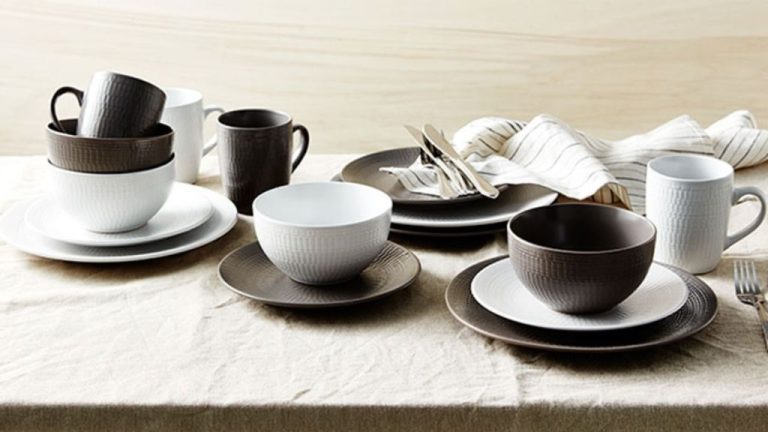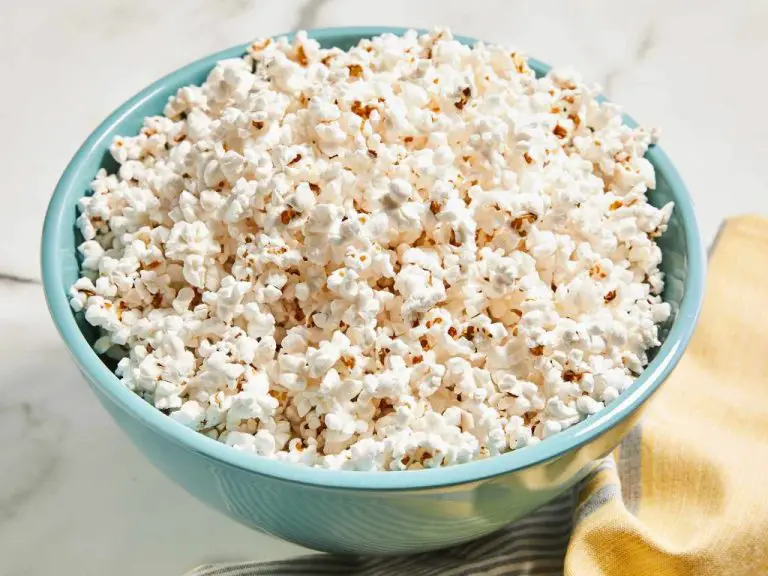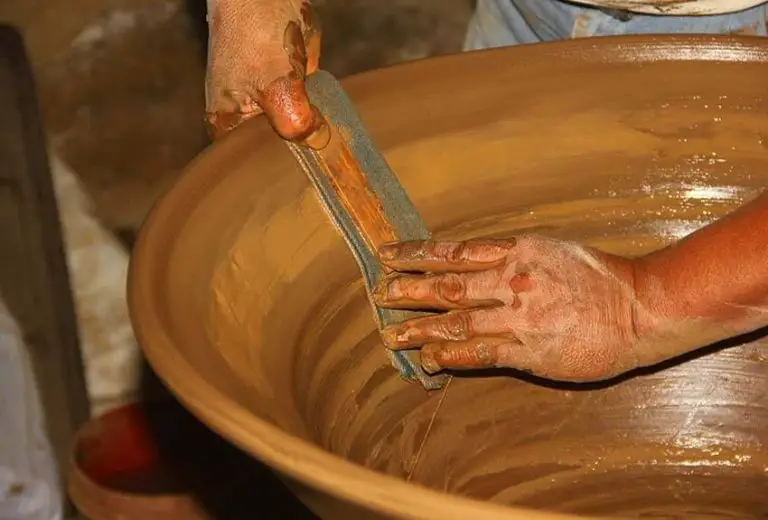What Is A Textured Roller Used For?
What Are Textured Rollers?
Textured rollers are a type of paint roller that have a textured or patterned surface. The texture comes from the nap – the woven or knitted fabric cover on the roller. Textured roller covers feature fibers of varying lengths and patterns to create different looks when paint is applied (https://www.familyhandyman.com/article/painting-with-a-textured-roller/)
Unlike standard rollers which have a short, uniform nap, textured rollers use longer fibers in inconsistent lengths to produce visible lines, dots, and variances when rolled onto a surface. The texture provides contrast and visual interest compared to standard smooth rollers.
Textured rollers are available in many different patterns. Some common examples include diagonal ribs, vertical ribs, swirls, peaks and valleys, random multi-length fibers, and more. The texture is stamped into the woven material that covers the roller.
By using textured rollers instead of standard rollers, painters can create faux finishes that mimic wood grain, stucco, stonework, and other textures on flat surfaces like walls and ceilings.
Types of Textured Rollers
There are several common types of textured paint rollers that create different finishes on walls and other surfaces:
Microfiber: These rollers are made from a synthetic blend of microfibers that creates a smooth, velvety finish. The fine fibers help pick up more paint and release it evenly onto the surface.https://khoshdast.ir/blog/post/%D8%A7%D9%86%D9%88%D8%A7%D8%B9-%D8%BA%D9%84%D8%B7%DA%A9-%D8%B7%D8%B1%D8%AD-%D8%AF%D8%A7%D8%B1-%D9%86%D9%82%D8%A7%D8%B4%DB%8C

Foam: Foam rollers are made from open cell foam material. They typically create an orange peel or stipple finish. The foam soaks up paint well and distributes it evenly.https://khoshdast.ir/blog/post/%D8%A7%D9%86%D9%88%D8%A7%D8%B9-%D8%BA%D9%84%D8%B7%DA%A9-%D8%B7%D8%B1%D8%AD-%D8%AF%D8%A7%D8%B1-%D9%86%D9%82%D8%A7%D8%B4%DB%8C
Mohair: These rollers contain a blend of mohair fibers that create a lightly textured, brushed finish. Mohair has good paint holding capacity.
Benefits of Textured Rollers
Textured rollers offer several advantages over standard nap rollers (https://www.familyhandyman.com/article/painting-with-a-textured-roller/):
- They create visually interesting textures and patterns on walls and ceilings, adding depth, dimension and character to the surface.
- The textured finish helps hide imperfections like drywall seams, patches and minor cracks.
- They tend to hold more paint so you can paint faster with fewer reloads.
- The stipple pattern helps disguise lap marks and roller lines.
- Textured finishes are more durable and washable than flat paint.
- They reflect light differently, helping hide flaws and adding visual interest.
- Textured paints are easier to touch up without visible differences.
Overall, textured rollers create a more decorative, dimensional finish compared to the smooth uniform surface from standard rollers. The added texture hides imperfections better while adding visual flair.
Best Uses for Textured Rollers
Textured rollers excel at creating unique finishes on walls and ceilings compared to standard smooth rollers. The textured surface helps apply paint in a more varied, non-uniform manner. This makes them ideal for:
- Adding visual interest – The uneven paint application creates shadows and contours for a more dynamic look compared to standard rollers.
- Hiding imperfections – Textured rollers can help mask minor cracks, bumps or flaws in the wall surface.
- Rustic effects – Their stippled finish lends a rustic, Old World look perfect for farmhouses or cottages.
- High-traffic areas – Textured paint helps conceal scuffs and marks on high-traffic walls in entryways, hallways, and kids’ rooms.
- Ceilings – They excel at creating “orange peel” textures on ceilings, hiding imperfections and creating depth.
Overall, textured rollers are ideal for adding dimension and character to surfaces where you want a decorative, non-uniform finish. Their unique stippling effect allows do-it-yourselfers to easily achieve designer effects.
How to Use Textured Rollers
When using a textured roller to apply paint, proper technique is important to achieve an even, consistent finish. Here are some tips for getting the best results:
Prepare the surface – Make sure the surface is clean and dry before starting. Fill any holes or imperfections with spackle or drywall compound and sand smooth.
Use a primer – Priming ensures better adhesion and coverage of the topcoat. For heavily textured walls, use a high-build primer to help fill in uneven areas.
Load the roller evenly – Dip the roller into the paint tray and roll it back and forth across the ramp area to distribute the paint evenly on the roller. Avoid overloading the roller with too much paint.
Apply in sections – Work in 2-3 foot wide sections across the wall, applying the paint in a “W” or crisscross motion to ensure even coverage. Overlap each section to blend the paint together.
Maintain a consistent pressure – Press firmly to push the textured roller evenly against the surface, but not so hard that you squash the texture pattern.
Finish with vertical strokes – Once the section is covered, finish with light vertical strokes from floor to ceiling to minimize roller marks.
Work methodically and quickly – Maintain a wet edge so you don’t get lap marks where sections overlap. Work in manageable sections to avoid paint drying before you finish the wall.
For best results, follow the manufacturer’s instructions for prep work, paint type, and application method when using textured rollers.
Caring for Textured Rollers
Proper care and maintenance is crucial for getting the most out of your textured roller and extending its lifespan. Here are some tips for cleaning and storing textured rollers:
Cleaning
It’s important to clean your textured roller after each use to prevent paint and debris buildup. Allow the roller to dry completely first. Then rinse the roller under warm running water while gently rubbing the cover to remove any remaining paint. Avoid submerging the entire roller in water to prevent damage to the frame or bearings.
For a deeper clean, fill a sink or bucket with warm water and a small amount of mild detergent. Swish the roller cover around to loosen any stubborn paint, then rinse thoroughly. Never use solvents, as they can damage the roller cover. Let the roller air dry completely before storing or reusing.
Storage
Proper storage helps maintain the shape and texture of your roller cover. Before storing, thoroughly clean and dry the roller. Wrap the cover with plastic wrap or a plastic bag to protect it from dust and debris. Store the roller on its end instead of laying it flat, which can cause flat spots.
Avoid compressing or distorting the nap when storing. Heat and sunlight can also degrade roller covers over time, so store textured rollers somewhere cool and out of direct light. With proper cleaning and storage habits, your textured roller should provide quality results for many painting projects.
Textured Roller Brands
There are numerous brands that manufacture high quality textured rollers. Some of the top brands include:
Purdy – One of the most popular brands for paint rollers and supplies. Purdy offers a wide selection of textured rollers in various nap lengths and patterns. Their White Dove roller is a top seller with its pebble-like texture.
Wooster – Known for their innovative roller technologies. Wooster has textured rollers like the Ultra/Fab that provide extra absorption and smoothness.
Shur-Line – Offers textured rollers designed for specific surfaces like ceilings, walls, and floors. Their texture rollers create attractive finishes.
PREMIER – Manufactures a number of specialty textured rollers including their heavily stipled Stucco roller and the spatter-patterned Knockdown roller.
Beau Red – Beau Red creates unique rollers like their water-based H2Ocean rollers that produce wave and ripple textures.
These major brands offer high quality textured rollers in a wide array of patterns and styles to suit any painting job.
Textured Roller Sizes
Textured rollers come in a variety of sizes for different painting applications. Some common sizes include:
4-6 inch rollers – Best for painting trim, edges, and smaller surfaces. Allows you to maneuver in tight spaces.1
9 inch rollers – Standard size for most painting projects. Ideal for painting walls and larger surfaces. Provides good coverage while still allowing maneuverability.2
14 inch rollers – Allows you to cover a lot of surface area quickly on large walls or ceilings. The large size can make maneuvering in tight spaces more difficult.1
Consider the size of the surface, the texture needed, and accessibility when choosing a roller size. Having multiple sizes on hand can be useful for tackling different painting tasks.
Textured Roller Covers
Textured roller covers are detachable sleeves that fit over the cylinder of a paint roller. They come in a variety of materials, nap lengths, and surface patterns to achieve different paint effects. Some common materials for textured covers include:
- Polyester – A smooth, durable synthetic material good for heavy paint textures like knockdown.
- Lambswool – A natural fiber with a high nap for stipple textures.
- Mohair – Goat’s hair with a plush, velvety nap perfect for Old World textures.
Nap length, which refers to the fuzzy fibers on the cover, also affects the pattern. Short 1/4″ naps work well for thin textures, while longer 3/4″ naps excel at thicker designs. The texture is molded into the fabric itself, with options like diamonds, swirls, stars, and more.
According to Home Depot, some of the most popular textured roller covers include:
- Wooster Pro Doo-Z FTP Formula 400 Textured Roller Cover – A 1/2″ lambswool cover good for knockdown textures (https://www.homedepot.com/p/Wooster-Pro-Doo-Z-FTP-Formula-400-Textured-Roller-Cover-0RFTTP9 symmetric 2-in-x-9-in-20542/100647312).
- Purdy 4-Pack White Dove Texture Roller Cover – A 3/8″ polyester cover ideal for small, subtle textures (https://www.homedepot.com/p/Purdy-4-Pack-White-Dove-Texture-Roller-Cover-0-in-x-0-in-1440100/100648215).
With so many textured covers to choose from, it’s important to select the right nap length, material, and pattern for the desired paint effect.
Textured Rollers vs Standard Rollers
Textured and standard paint rollers each have their advantages and disadvantages. Here’s how they compare:
Advantages of textured rollers:
- Better at applying paint to uneven surfaces – the texture helps spread paint into cracks and over bumps more easily than a standard roller according to Glidden.
- Create an orange peel or stippled paint effect – the texture imprints a pattern onto the painted surface.
- Hold more paint than standard rollers so you can cover larger areas before reloading your roller with paint according to Purdy.
Disadvantages of textured rollers:
- Can leave an uneven paint finish if not used properly.
- Not ideal for painting smooth surfaces.
- Harder to clean thoroughly after use.
Advantages of standard rollers:
- Provide a smooth, even coat of paint on flat surfaces.
- Available in a wide range of nap sizes for different surfaces.
- Easier to clean after use.
Disadvantages of standard rollers:
- Don’t apply paint as easily over uneven textures.
- Hold less paint than textured rollers.
- Can leave roller marks if used incorrectly.
In summary, textured rollers are ideal for uneven, rough surfaces while standard rollers work best on smooth, flat surfaces. Consider the surface you’ll be painting to determine which is better for your specific project.




